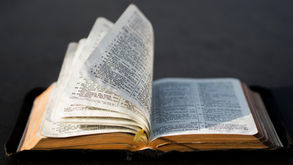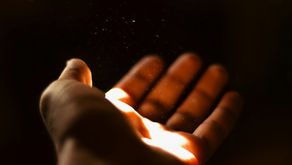21 Articles on the Life of the Bab
- Uplifting Words

- Oct 5, 2019
- 5 min read
Updated: Dec 3, 2019
21 Articles on the life and personage of the Bab as well as stories of His first believers.
In 2019 Baha’is worldwide will celebrate the 200th anniversary of the birth of the Bab, the Herald of the Baha’i Faith. The festivities will culminate in tens of thousands of celebrations taking place throughout the world on 28-30 October. READ MORE >
Shaykh Ahmad, Siyyid Kazim & Mullá Husayn. This is a story of a search for truth in a time of world-wide darkness and confusion. READ MORE >
The religious matrix of the Bahá'í Faith was Islam. Much as Christianity was born out of the messianic expectations of Judaism, the religion that was to become the Bahá'í Faith arose from eschatological tensions within Islam. In the same way, however, the Bahá'í Faith is entirely independent of its parent religion. READ MORE >
The early nineteenth century was a period of messianic expectations in many lands. Deeply disturbed by the implications of scientific inquiry and industrialization, earnest believers from many religious backgrounds turned to the scriptures of their faiths for an understanding of the accelerating processes of change. READ MORE >
In this article, Douglas Martin considers the Revelation of the Báb in the context of its impact on the Western writers of the period and its subsequent influence. READ MORE >
In the autumn of 1819, the Báb, whose name was Siyyid Áli-Muhammad, was born in the beautiful city of Shíráz, located in the south of Persia (Iran). He belonged to a noble ancestry which traced its origin to the Prophet Muhammad. READ MORE >
Purity of heart and moral courage were matched by an idealism with which most Western observers could also readily identify. By the 19th century, the Persia to which the Báb addressed Himself and which had once been one of the world’s great civilizations, had sunk to an object of despair and contempt among foreign visitors. READ MORE >
May 23, 1844, signalizes the commencement of the most turbulent period of the Heroic Age of the Bahá’í Era, an age which marks the opening of the most glorious epoch in the greatest cycle which the spiritual history of mankind has yet witnessed. READ MORE >
This brief historical framework will be of assistance in understanding the thrust of the Báb’s teachings. In one sense, His message is abundantly clear. As He repeatedly emphasized, the purpose of His mission and the object of all His endeavors was the proclamation of the imminent advent of Him Whom God will make manifest, that universal Manifestation of God anticipated in religious scriptures throughout the ages of human history. READ MORE >
Apart from the specific laws of the Bayán, the Báb’s writings also contain the seeds of new spiritual perspectives and concepts which were to animate the worldwide Bahá’í enterprise. Beginning from the belief universally accepted by Muslims that God is one and transcendent, the Báb cuts sharply through the welter of conflicting doctrines and mystical speculations that had accumulated over more than 12 centuries of Islamic history. READ MORE >
Mirza Ali Muhammad was born in Shiraz in 1819 and was executed in Tabriz in 1850, at the age of 31. His title, the Bab, means “the Gate.” Similar to John the Baptist, He foretold of a Mighty Messenger of God that was coming soon. READ MORE >
This is a story about how Mullá Husayn, Quddús, and the heroic Bábís defended the Faith of the Báb at Fort Shaykh Tabarsí. READ MORE >
This is a story of a humble youth who became a hero and a martyr. The Báb had told Mulla Husayn to go to Tihran, and visit all the towns on his way to tell people that the Promised One had come. The first city that Mulla Husayn visited was Isfáhán. Isfáhán was famous for two things - the great learning of its clergy, and also for the keen expectation of the people there, that the coming of the Promised One was at hand. READ MORE >
To mark the Bicentenary of the Birth of the Báb and to celebrate the Life, Mission and Heroism of the Báb and His followers, the Irish Bahá'í community has produced 19 short videos. WATCH >
A beautiful collection of Baha'i holy writings and prayers by the Bab, herald of the Baha'i Faith, put to music and shared through these videos. WATCH >
Dawn of the Light, a new feature film commissioned by the Universal House of Justice for the occasion of the 200th anniversary of the birth of the Bab, was released today on the bicentenary website, bicentenary.bahai.org. READ MORE >
The British Library is marking the bicentenary of the birth of the Bab with various initiatives alongside the launch of a new website, Discovering Sacred Texts, and companion exhibition, which feature examples of the Faith’s original texts. READ MORE >
It was a dark and dismal time in 19th Century Persia (Iran). Prejudice, rigidity, superstition, and backward laws and customs mandated by the Muslim religious leaders kept the masses in fear and ignorance. Those who were poor and disadvantaged, or belonging to a religion other than Islam were subject to discrimination and often harsh persecution sanctioned by the authorities. READ MORE >
Inspired by this final message, Táhirih entered a period in which she fasted by day and engaged in prayer and meditation at night. One such night when it was nearing dawn, she laid her head on her pillow, and dreamed of a youth wearing a black cloak and a green turban. READ MORE >
Among the Báb’s most faithful followers was a brilliant, courageous and gifted young poet known as Táhirih (the Pure One). READ MORE >
Táhirih was in the village of Bárfurúsh with several other Bábís when nearby villagers came and attacked them. She was captured and brought to the city of Tihrán, where she was taken to meet Nasser-al-Din, the King of Persia. READ MORE >
BONUS ARTICLES
The impact of the Báb and His followers on writers and artists. Accounts of the meteoric rise, captivating claims, and mysterious public execution of the Báb—born 200 years ago in Shíráz, Iran—not only made a profound impression on the land of His birth, but also much further afield. READ MORE >
The first European novel that was set against the episode of the Báb was published in France 1891. In Un Amour au Pays de Mages, A. de Saint-Quentin—a French consular official and colleague of Gobineau’s—created a love story between a humble dervish and the daughter of a cleric in Qazvín played out amid the events of Bábí history. READ MORE >





















